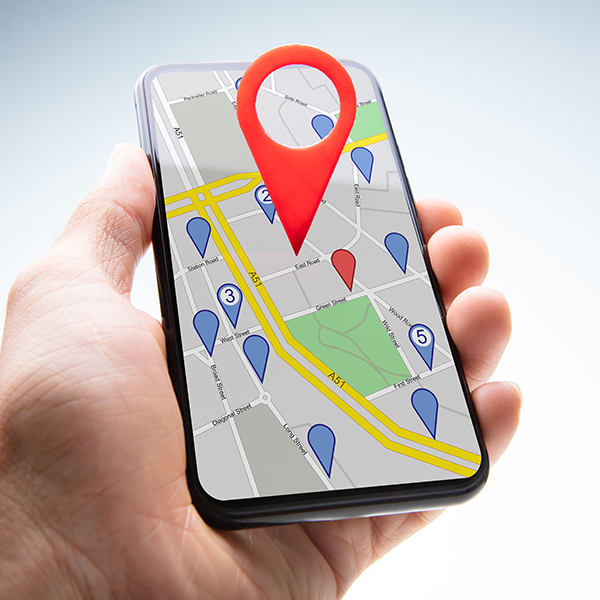Mobile Platform: Ready For Web 3.0

By Paul Bruemmer, Red Door Interactive
Compared to overall ad spend, mobile is but a drop in the bucket. For instance, according to eMarketer, in 2006 the mobile ad spend was $1.5 billion worldwide. Compare that number with the $24 billion spent on Internet advertising and $450 billion overall ad spend the same year.
Nevertheless, everyone expects mobile to get big.

ABI Research expects to see a 13-fold increase in global spending on mobile marketing and advertising between 2006 and 2011. Informa Telecoms & Media predicts mobile advertising will be worth $11.5 billion by 2011, surpassed by eMarketer's projection of $14 billion. Some analysts say that figure can go up as high as $20 billion. So, why hasn't something more dramatic happened yet?
Mobile Is Hot, Not
There are several reasons for the slow adoption of mobile marketing by brands and other advertisers, not the least of which is the paucity of mobile websites and the poor user experience on cell phones and PDAs. But that's changing rapidly as proliferation of 3G smartphones makes surfing easier and more enjoyable. Suddenly the iPhone and BlackBerry have become the must-have du jour - you've all seen, "Sent via BlackBerry," right?
Then, too, the carriers have been picky about controlling search functionality on their handsets. Many default to white-label search tools provided by lesser-known search providers. This allows carriers to put their own brand on the cell phone's search function, giving them a degree of control over customer search behavior and future search advertising revenue.
However, mobile users are picky when it comes to search engines. iCrossing's 2007 mobile study reveals that mobile users prefer Google, Yahoo!, and MSN rather than the default search provided by carriers.
Finally, advertisers themselves are wary of consumer privacy issues and await the FCC's edict on the use of customer data, including location information, enabling local-mobile advertisers to conveniently shill consumers on the go.
Mobile Advertising
Up until now, mobile marketing has been mostly text-messaging campaigns as marketers are still wary of including video and other multimedia messaging ads.
Obviously, ads that work on the wired Web differ from what's needed on mobile phones due to the small screen size and a number of user-experience factors. Below are some types of ad campaigns that work on the mobile platform.
Opt-in SMS Campaign: Text messages sent by short message service (SMS) ads are used to persuade consumers to give advertisers their cell phone number in exchange for special offers and coupons delivered via text message. Examples include contests to win prizes and SMS alerts to customers reminding them to reorder a product while handily offering a discount coupon with "buy now" call to action.
Opt-in MMS Campaign: An extension to the SMS protocol, MMS provides the means to send and receive wireless messages that include images, audio, and video clips in addition to text. For example, promotions can offer a mobile game by giving users a chance to download the free demo through a WAP link embedded in the message. Once the trial is over, users can choose to buy the full game from a dedicated WAP site.
Location-Specific Targeting: Cellular networks can locate callers to within 50 to 300 meters by triangulating signals. Thus, the caller's location could be matched up with a business that has purchased an ad targeted by surfing behavior and demographics. Carriers like Sprint Nextel expect to deliver ads based on users' near-exact location. While most carriers have yet to go with GPS-specific ads, the consensus is they soon will.
Local Search Display Ad: These ads are designed specifically for local search on the mobile Web. They can also be used to drive traffic to an offline business. For example, a consumer searching from Yahoo! Local on a cell phone might be trying to find information on mini blinds. That consumer would be served an ad within search results for a nearby hardware store or possibly Lowe's or Home Depot would have sponsored ads showing as well. The consumer could click the ad for more info or even click-to-call.
Ad-Supported Content Sponsorship: Gartner predicts sponsorships will ultimately be the dominant format for mobile advertising. This model is useful because consumer surveys indicate mobile users are willing to receive and view ads in return for free or lower-cost mobile apps or services.
A 2006 Informa Telecoms & Media survey shows that music, games and mobile TV/ video are among the most popular mobile content services mobile users want for free.
For example, Greystripe provides mobile content free to consumers through its Ad-WRAP advertising network that delivers full-screen images, videos, and scrolling banners into its mobile games and applications. After download, users must view a full-screen ad before and after playing the game. In-game ad space sells for $45 CPM. Ad types are click-to-call, clickto- mobile Web, and click-to-jump page (survey/poll), and revenue is shared with the game publishers. This model claims an average worldwide click-through rate of 15 percent for the seven brands with ads in the game portal.
Carriers are testing a similar model to supplement their current payment plans. Verizon is testing a two-tier payment model that charges higher fees for no ads and lower fees for ad-supported content.
Planning and Targeting a Mobile Campaign
Because of the personal nature of mobile phones, mobile campaigns must be opt-in, relevant to the audience, and deliver a good user experience. Campaigns are good for branding and creating customer loyalty, as well as increasing sales. From an analytics point of view, there are many challenges; however, there is no better unique-identifier than the mobile phone number.
Best prospects are early adopters, business users, and the youth market (teens 13-17 and the 18-34 demographic). Know your audience well and target to their needs.
You can get good results from a well planned and targeted mobile campaign. Response rates are typically higher than those reported on wired campaigns. Enpocket reported an MMS-driven campaign for Samsung that achieved response rates of over 15 percent and a conversion rate of 2 percent.
The Airwide Solutions survey found marketers got good results with mobile ads: 75 percent reported mobile-marketing response rates over 5 percent. Another 27 percent said they saw purchase rates of over 5 percent in campaigns.
Who's Going Mobile?
The Airwide survey found 32 percent of brands will spend more than 5 percent of their marketing budgets on mobile marketing in 2009, while 58 percent expect to reach that level by 2012. MarketingSherpa found 49.2 percent of marketers are thinking about conducting a mobile search campaign, and 13.8 percent will definitely start or test one this year.
We have focused so far on the execution of mobile campaigns; however, there are other factors that impact the success of mobile marketing, namely mobile site design and mobile search optimization. Below is a quick overview.
Mobile Site Design
While search engines will transcode any website into a mobile site, this may not result in a mobile-friendly site. Because site design is different for the mobile screen, your dot-com site may not provide the best user experience when transcoded for mobile devices. In most cases however, you can use a subdomain such as mobile. yourdomain.com or xhtml.yourdomain. com and, with a little updating and coding you'll be right on track.
Here are some examples: if you have a smartphone visit mobile.citysearch.com - you can also check it out on your PC from a standard browser. Another example which I found to work very well on my mobile phone is xhtml.weather.com where I can input my destination zip code for local weather upon arrival or check on traffic conditions, news and other options that are all nicely formatted.
Coding: Use XHTML and write correct code. Avoid unnecessary code to ensure fast download. Use external CSS to decrease load time and ensure correct display across multiple devices with different screen resolutions. Keep filenames short and keyword-rich.
Navigation: Place navigation buttons below your most important content to keep that content above the fold and visible to users as they surf. Ensure navigation buttons are clearly labeled and well organized. Use text links for main navigation. Provide a site map - very important. Provide jump links on top, allowing users to quickly access content below the fold, and keep important inner pages within three clicks of the homepage. Remember, in some cases you're designing for two square inches, so be mindful of the tiny screen.
Mobile Search Optimization
When optimizing your site for mobile search engines, follow traditional SEO best practices like targeted keyword copy, meta tags and links but adjust to accommodate the small screen. For example, when selecting keywords, remember that queries will be shorter - two to three words in the average mobile search query.
Avoid pop-ups, frames, and Flash. Run a linking campaign aimed at gaining links from relevant mobile sites. Press releases and blog posts work well for gaining backlinks. Don't forget social bookmarking and tagging. Keep embedded objects (images, scripts, etc.) to a minimum because they might not download properly.
Here's a neat trick: make your telephone number clickable by using the sample syntax below. This immediately connects users to your business when they click on your phone number.

Test across devices and device simulators (e.g., Google Mobile Proxy and Skweezer). Validate your dot-mobi site with mobile code checkers (e.g., W3C Mobile Web Validator and .Mobi Validator).
Check out the W3C Mobile Web Initiative and Open Mobile Alliance sites for mobile Web development standards.
Submit to Major Mobile Search Engines and Directories
Besides the majors, focus on the local and vertical search engines relevant to your niche. Many verticals are local in nature - people looking to rent a house might go to Craigslist. Retail searchers might go to BizRate or PriceGrabber to compare prices. Locally-oriented verticals include real estate sites like Zillow, and automotive portals like Vehix. Some verticals charge a submission fee. By rule, the nature of your business dictates the local/vertical search engines where you want to be listed.
Your Site to Go
It's a good idea to take your site to go because with 2.8 billion mobile phones around the world (Wireless Intelligence, 2007), you can potentially reach a much bigger audience than the billion or so personal computers worldwide. Additionally, the number of mobile phones in use is growing much faster than the number of computers. And finally, consider this: most people carry their mobile with them, everywhere ... something that can't be said for computers or anything else.

Subscribe to Our Newsletter!
Latest in Mobile Marketing










